Army Officially Bringing Back ‘Pinks and Greens’
A slight variant of the uniform from World War II and Korea is coming to a soldier near you.
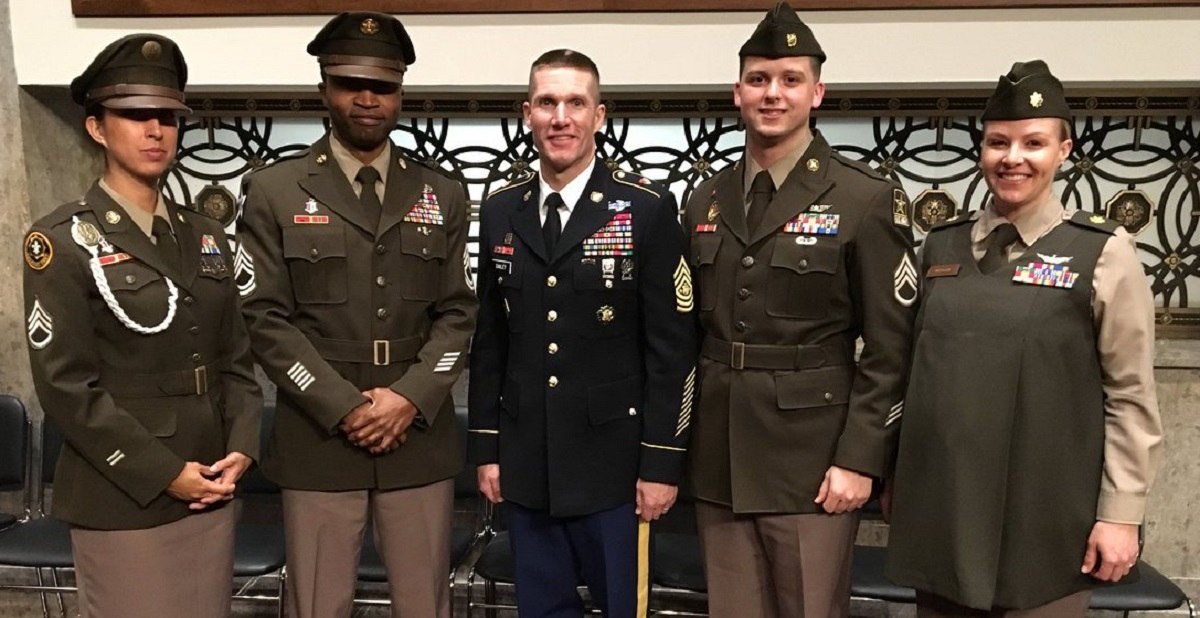
After a two-year discussion, the Army officially announced on Veterans Day that it is bringing back the iconic “pinks and greens” uniform
Army Times (“It’s official: Army approves ‘pinks and greens’ uniform on Veterans Day“):
The Army was able to straighten out its congressionally mandated notification requirements in time to announce on Sunday, Veterans Day, that the much anticipated “Army Greens” will indeed be your next service uniform.
Formerly known as the “pinks and greens,” the World War II-era officers uniform could go Army-wide as soon as 2020, according to a release that was posted Sunday to the Army’s website but was not shared through any of its social media channels.
“The current Army Blues Uniform will return to being a formal dress uniform, while the Army Greens will become the everyday business-wear uniform for all soldiers,” the release said.
Stars and Stripes (“What’s old is new: Army rolls out ‘pinks and greens’ service uniform“):
The uniform worn by the World War II Army — “Army Greens” — was adopted Sunday as the service’s new service uniform.
Army officials have been discussing adoption of the retro-style uniforms with pinkish-brown trousers and dark olive jackets, known as “pinks and greens,” for months, as part of an effort to link soldiers to the service’s history.
The uniforms were presented by Program Executive Office Soldier at the Association of the United States Army’s annual exposition in Washington, D.C. last year and had the support of the Sergeant Major of the Army Dan Dailey, who wore a prototype at the Army-Navy game last December.
The new uniform, which officials said would be “cost-neutral” to enlisted soldiers and would not come at an added cost to taxpayers, is expected to be fielded to soldiers reporting to their first units beginning in summer 2020. All soldiers will be required to have the uniform for wear eight years after that.
Many consider the pinks and greens the sharpest uniform in Army history, and it appears to have support among a large number of soldiers. An Army Times survey found more than 70 percent of respondents favored the idea of returning to the WWII uniform.
Some soldiers have voiced reservations, however, about adding yet another dress uniform to their wardrobe.
In late 2017, troops at Camp Zama in Japan told Stars and Stripes they had concerns about buying another new outfit so shortly after the Army phased out green office clothes and an older blue dress uniform two years earlier.
The Army has come under some, quite deserved, scrutiny over the last fifteen or so years for its frequent uniform changes. It has changed camouflage patterns several times, at enormous expense, after joining the digital pattern craze started by the Canadians and picked up in the U.S. by the Marine Corps.
The previous change to the service uniform, though, was one that I had been advocating going back to my own service. When my dad served, from 1962 to 1983, soldiers typically wore fatigue uniforms only for field duty or manual labor and wore a service uniform, Class A or B, for everything else. That was already changing toward the end of his tenure and, by the time I was commissioned in 1988, it was rare, indeed, to wear anything but the camouflage Battle Dress Uniform.
Aside from a short stint as an ROTC recruiter as I was transitioning from college to my branch school, I essentially never wore either my Class A or Class B uniform. Which was a good thing, because it was ugly. Here’s an iconic photograph of General Colin Powell wearing the A version:
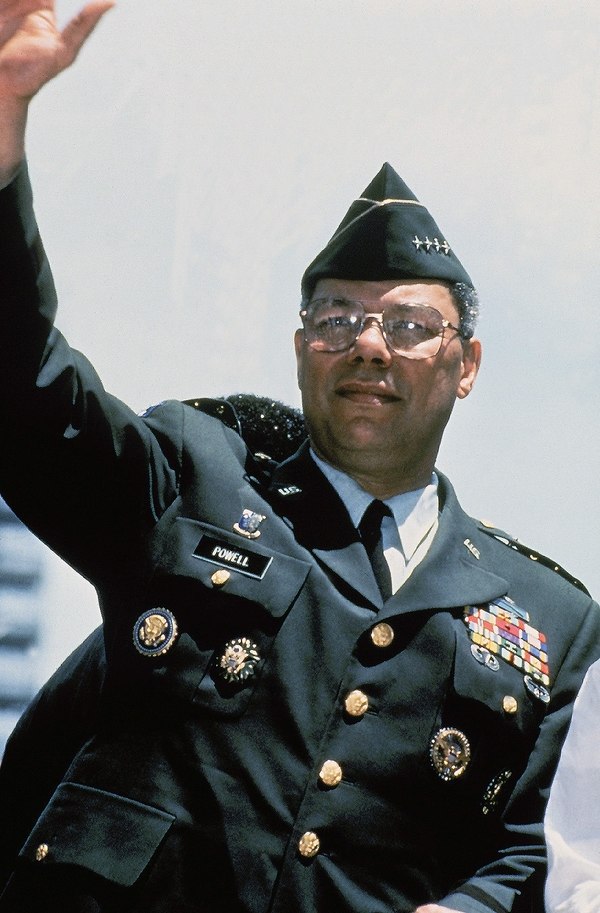
The cheap polyester material and the lime green shirt were just terrible.
An earlier variant of the uniform, with a khaki shirt, was better. But that was phased out in the early 1980s along with a completely khaki uniform with short sleeves. Nobody liked the green shirt but it had the virtue of 1) not looking like the Marine Corps’ uniform and 2) converting from Class A to B by simply putting on or taking off the jacket.
Because we seldom wore it and it was rather unattractive, I long advocated simply dumping that uniform entirely and having our standard “Dress Blue” uniform become the service uniform:
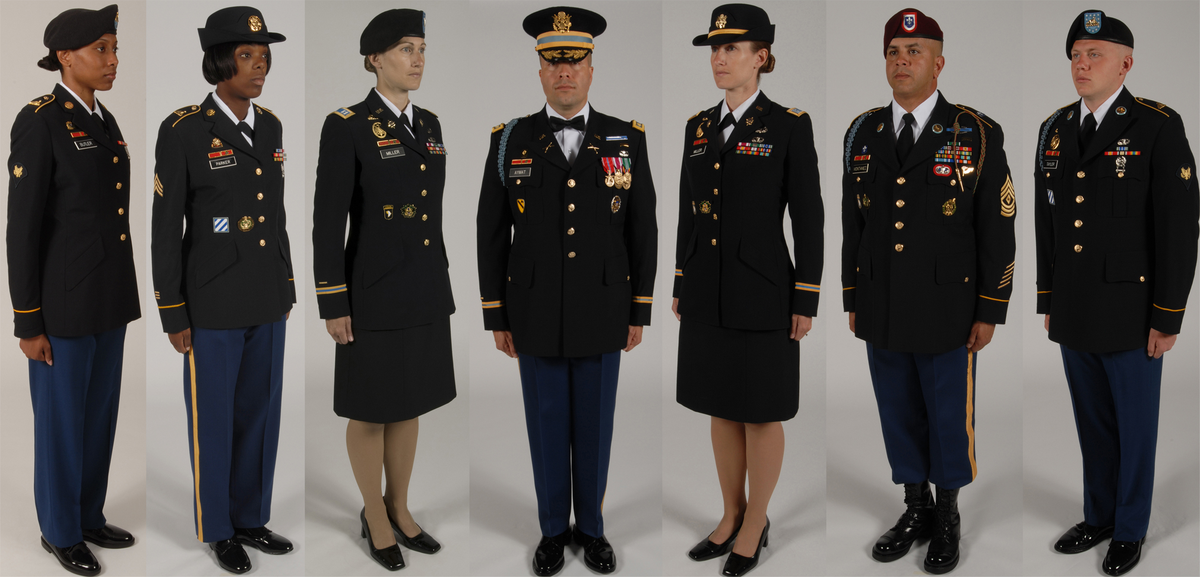
It’s a beautiful uniform that evokes the heritage of our Revolutionary War and Civil War Army. The Army actually took my suggestion (although, almost certainly without knowing it was doing so) a few years back, gradually phasing out the greens in favor of the blues, redesignated as the Army Service Uniform.
The problem was two-fold. First, some people think they’re “too dressy” for everyday wear. Which is rather silly; navy blue is a traditional suiting color. Second, and one I recognized even when advocating for the change, was that the Class B version left something to be desired:
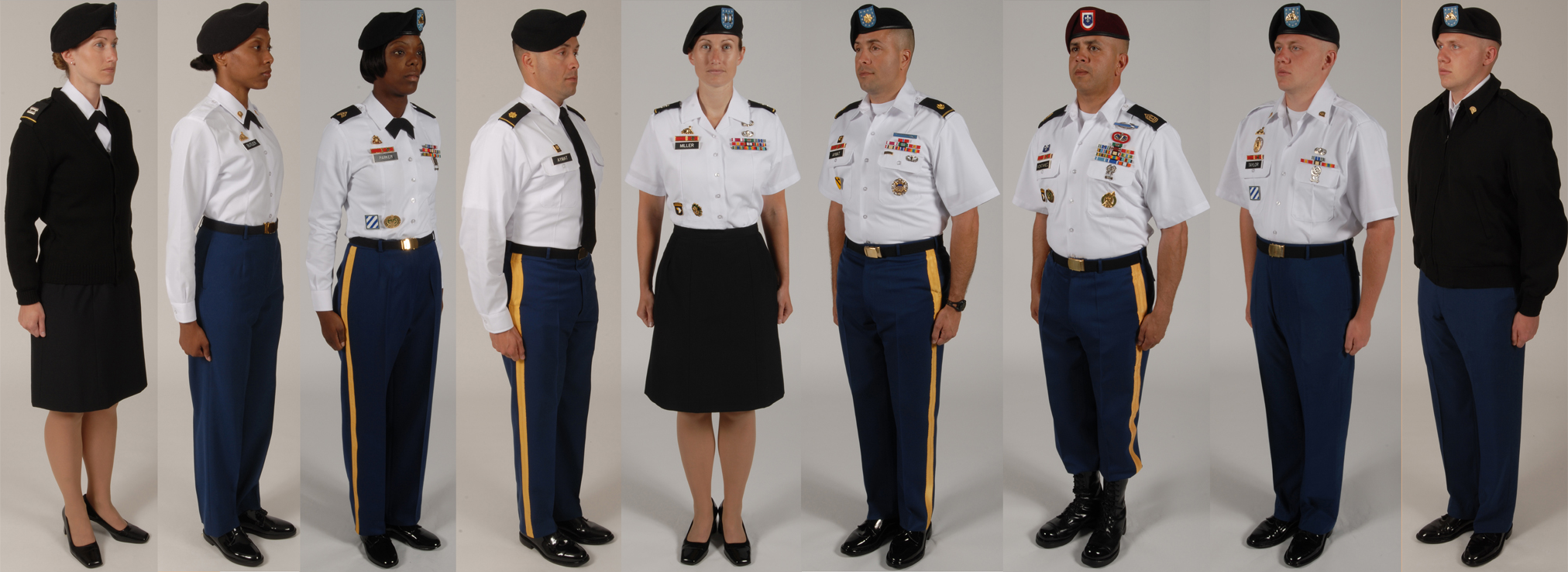
There is admittedly something of a security guard quality to the look—especially because of the bizarre insistence on wearing ribbons and badges with the uniform.
So, once pinks and greens are phased in, the blues go back to being a “dress” uniform. The problem with that, aside from the fact that soldiers hardly ever wear either uniform, is that there’s already another dress uniform, the Mess Dress uniform worn by the gentlemen on the flanks of the photo below:
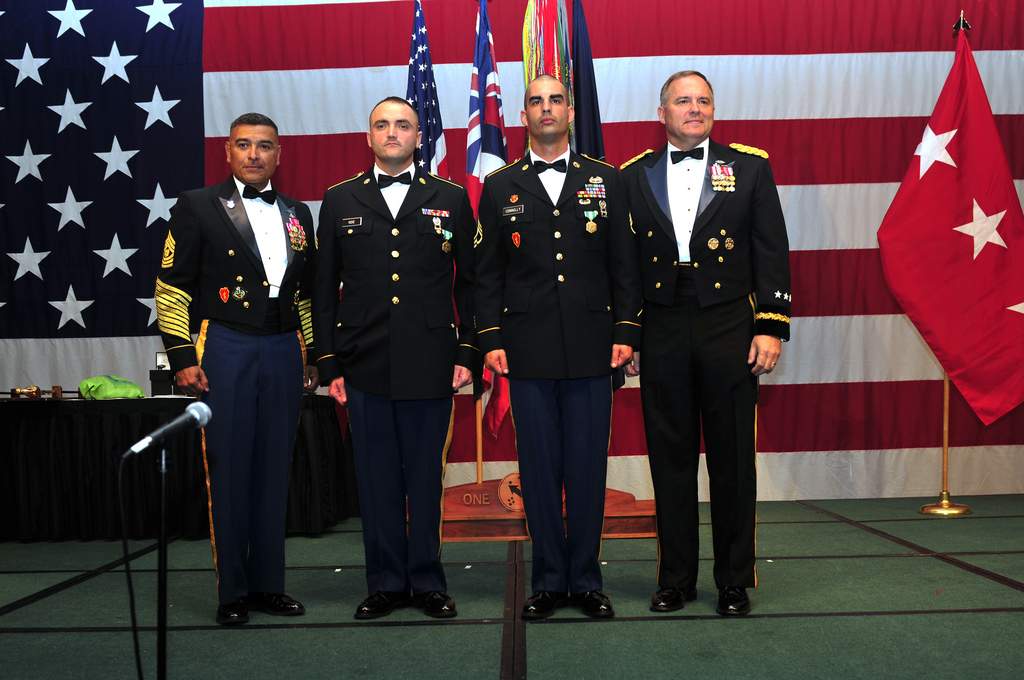
That uniform is typically worn for “black tie” functions, although it’s really more equivalent to a tuxedo with tails, by more senior personnel. It’s required for officers in the field grades and above and expected for senior NCOs, especially sergeants major in higher commands. Junior officers and most enlisted personnel simply “dress up” the already dressy Dress Blues by swapping in a bow tie for the four-in-hand tie, as demonstrated by the two gentlemen in the middle of the above photo.
The Army will be rejoining the Marine Corps in having three uniforms for service, dress, and fancy dress. And, since there was only a four-year gap when that wasn’t the case, it’s hardly a huge deal. But it’s just odd. Having so many specialized uniforms made some sense in a more formal era. But most soldiers are going to wear their “Army Greens” perhaps four or five times a year—mostly for inspections to prove they have a set of “Army Greens” and for official photographs and wear a dressier uniform, whether the Blues or Mess Dress, another one or two times a year. Officers, especially more senior officers, will wear the dressier uniforms slightly more often.
Phil Carter observes that it says something about Army culture that it’s yearning to go back to its 1940s uniforms. Interestingly, the Air Force is working on a new service uniform, too. And, you guessed it, they’re going to evoke the World War II period.
UPDATE: In the comments, @MarkedMan wonders whether “frequent uniform changes has always been part of the culture.” The Army has certainly had a lot of uniforms; the Navy and the Marine Corps have been much more static.
The Army, in particular, has historically had the problem that it was mostly a conscripted, mass mobilization force. So, in the aftermath of major wars, hundreds of thousands if not millions of people were discharged and had uniforms they no longer needed. They often wore them as part of their civilian attire or sold them off at surplus stores. In the eyes of the Army, this rendered those uniforms no longer distinctive.
Indeed, that’s why the pinks and greens went away to begin with. Millions of WWII and Korean War vets were wearing parts of their uniforms around in civilian life. (You don’t see much of that nowadays, with our all-volunteer force. The closest I see is homeless folks wearing old camouflage uniforms.) So, the old green uniforms were born.


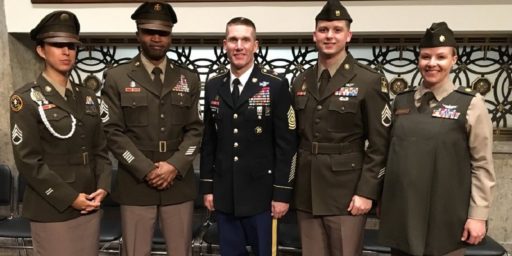
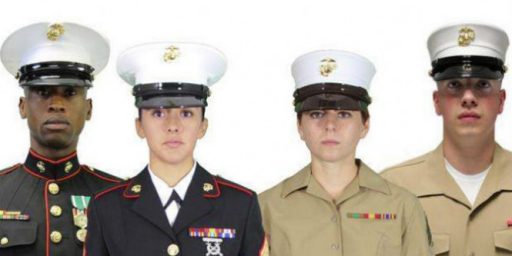
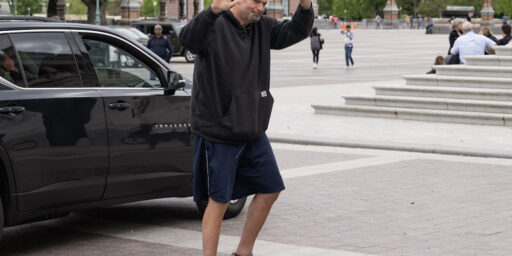
Heh. Rest assured, those soldiers serving in Army Bands will wear all of these uniforms frequently. While most enlisted soldiers were not issued blues in my era (77-04), musicians serving in bands were issued TWO. Lord, it was terrible wearing the polyester for parades in Georgia. -a retired bandsman.
James, all due respect, but the military seems to be obsessed over uniforms.
@John A Peabody: Yes, that’s true. I’m thinking of the field army here. Even people at the Pentagon wear fatigues these days.
@MarkedMan: It’s a bit silly, although it is a core part of the military identity.
I wonder if this frequent uniform changes has always been part of the culture? To be honest it strikes as wanting to separate from the past, but given the place tradition holds in the military I suppose I must be mistaken in this.
@MarkedMan: Interesting point. I replied in an update to the original post.
Didn’t there used to be rule of thumb that in war the better dressed army usually loses? (American Civil War aside. (Except Confederate generals did tend to dress well.))
The Navy already went through this a decade ago with the Service Dress Khaki uniform for Chiefs and Officers. Due to cost considerations, it was abandoned a half dozen years ago.
I always liked the look of that uniform, and during my time as a Chief, I wished that it was an option for us. Alas, it wasn’t meant to be.
Putting “air force mcpeak uniform” (it partially autofilled!) into a search I was entertained to see this 2012 discussion as a top result:
https://www.outsidethebeltway.com/air-force-chief-of-staffs-hilarious-new-uniform/
Related to this are the restrictions on wearing working uniforms away from the workplace, that used to be strict in the 70-80s = hide the real military.
My old man always looked sharper in his WW II Army Air Corps “pinks and greens” (I had no idea they were called that) than he did in his Korean War Air Force blues.
@Richard Gardner: The Marine Corps is still absurdly antiquated on that front. Marines aren’t allowed to so much as stop to fill the gas tanks of their cars while in their cammies. This results in the perverse practice of Marines wearing civvies to and from work and having to change back and forth in the event they need to run a quick errand during lunch.
That said, I rather preferred the old practice of wearing service uniforms for ceremonial functions and limited the wear of fatigue uniforms for quick stops. I’m not sure people need to be in sit-down restaurants in camouflage.
That tuxedo uniform is terrible. A lot of the uniforms are terrible.
I like the green and pink — it’s understated, as much as it can be with all the ribbons and nonsense.
The blue uniforms look like a police chief’s uniform. Particularly Chief O’Hare from the old Batman show with Adam West.
@Gustopher: Police uniforms look so much like Army uniforms because they deliberately aped Army uniforms. I actually like the mess uniforms for black tie events, as they really have a long heritage going back to British and other European uniforms. It’s also really the only time that medals, as opposed to ribbons, are worn on the uniform–albeit in miniature form.
@OzarkHillbilly: Except that when I took my father’s World War II Army Air Corps uniform out of the closet on Sunday, it was more “pinks and browns” than “pinks and greens.”